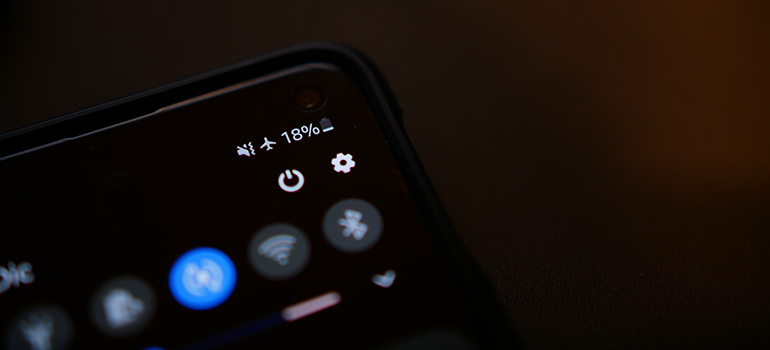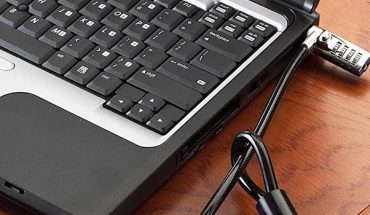
As smartphones have gotten bigger, better, thinner, and more versatile, they also offer markedly improved battery life. However, since we have them on us all the time and use them to perform more tasks than ever before, from streaming videos and music to gaming, video calls, browsing websites, social media, and more, it’s not uncommon to find your battery in the red at the worst possible time.
Thankfully, there are things you can do to help conserve battery life. Even when your phone offers an all-day battery, you’ll inevitably run into a time when you haven’t gotten around to charging it (or simply forgot) and the battery is almost depleted. What’s more, battery power lessens over time with any battery-operated device, which means if you’re still holding on to a phone that’s several years old, the battery might not be as efficient as it used to be.
In honour of National Battery Day on February 18, here are some tips for conserving battery life.
Don’t Recharge to 100%
HMD Global, the home of Nokia devices, suggests that when charging a smartphone using a high-voltage charger, getting it all the way to 100% can actually put a strain on the battery. Instead, HMB recommends charging the phone to up to 80-90% to provide “optimal usage.” That might mean charging the phone more often, but it will prolong the battery life in the long run.
Turn Off Location Settings
Location settings are useful if you’re using the phone for GPS while driving, for example, or tracking a running route. It’s also useful for gathering location-based promotions, or if you want to be able to find locations near you. But if you’re not actively using it, turning off location settings, even temporarily, can help conserve battery life. You should also check in settings to see which of the many apps you have are using location settings. Chances are, many use it that don’t need to, so turning off location settings for just these apps can also help extend your battery life a little bit further.
Avoid Extreme Cold or Heat
Your phone can overheat in extreme temperatures (ever gotten that dreaded orange exclamation mark on your iPhone when you leave it out on a patio during a humid summer day warning you to cool it down?) But extreme hot or cold temperatures can also impact the efficiency of the battery. “It’s best to keep them at room temperature to ensure the battery lasts as long as possible,” suggests HMD Global. This might mean keeping the phone in your pocket or purse while out in the sun or conversely, out and about on a frigid winter day. Take the phone out only when needed.
Don’t Charge Overnight
Many of us rely on our phones all day long, which means we tend to plug them in at night while we sleep. Plugging the phone into a charger on your night table while you sleep can be convenient since you wake to a fully charged device. However, that not only means charging it to 100%, which you should try to avoid if possible, it also means the phone is plugged in and charging non-stop for 6-8 hours. “If the device is kept charging,” says HMD Global, “the battery will begin to drain.” Instead, use an opportunity during the day, like while you are at your desk and working, making dinner, or doing another activity where you don’t necessarily need the phone, to charge it up. Depending on the device, chances are it can be fully charged from 0%-80% in just a few hours. With faster USB-C charging, that time can be reduced even less. You might not wake up to a phone that’s at 100% but continuing this process each day will keep it sufficiently powered up. It will also help encourage you to disconnect and take a break from screen time.
Reduce Screen Brightness
A simple way to conserve battery life when you find you’re in the yellow or even red is to reduce screen brightness. This might make it harder to see but doing this will help extend the battery a bit longer. You can also use dark mode on the phone to make the battery last longer.
Turn Off App Background Refresh
If you have apps refreshing in the background, this can drain the battery quickly when numerous apps are all updating at once, or apps are consistently updating all the time. Instead, use manual app refresh and do this whenever the phone is plugged in to charge, or you know you’ll be at home for a few hours. It is important to update apps whenever an update is offered, particularly if it includes security patches. But as long as you make a point to keep on top of this, you can update apps when you know it won’t drain the battery when you need it the most.
Close Down Apps You Aren’t Using
We’re all guilty of leaving multiple apps and web pages open for ages, doing a clean-up infrequently if we notice the phone is running slowly. Try to do this more often because those apps running in the background because they haven’t been shut down can eat up battery life. Make a point to through what’s open in the phone every night and shut down all web pages and apps that don’t need to running in the background 24/7.
Use Battery Savings Modes
Many of the latest smartphones feature some type of battery savings mode. Use this when you need to get through another few hours to ensure your phone doesn’t die. This mode will shut down non-essential apps and keep the phone’s most pertinent functions active. If you’re really in a pinch, turn on Airplane Mode, which will not allow you to make calls or receive e-mails, for example, but can save you a few bars until you can get to a charger, or leave you enough to call a cab to get home or for emergency use.
Always Bring a Portable Charger
Despite the latest smartphones boasting fabulous battery life, it’s still a good idea to keep a portable charger on hand as a back-up. Pre-charge and keep it in your backpack, purse, or briefcase to use for a top-up. Some will hold their charge for a long time, others might need to be recharged as they deplete if you don’t use them. Whatever the case, there are inexpensive ones available that come pre-charged as well. Ideally, opt for one with a built-in cable so you don’t need to pack one. This will ensure that your phone is always charged up and you won’t ever have to tether yourself to a power outlet and ask around for a charging cable to get some more juice.
Another note to consider on National Battery Day: when you are done with a battery, make sure to safely recycle it. This keeps batteries out of landfills and can help protect the environment. Learn where you can recycle your old electronics, including batteries, within Canada.
More articles on smartphone



